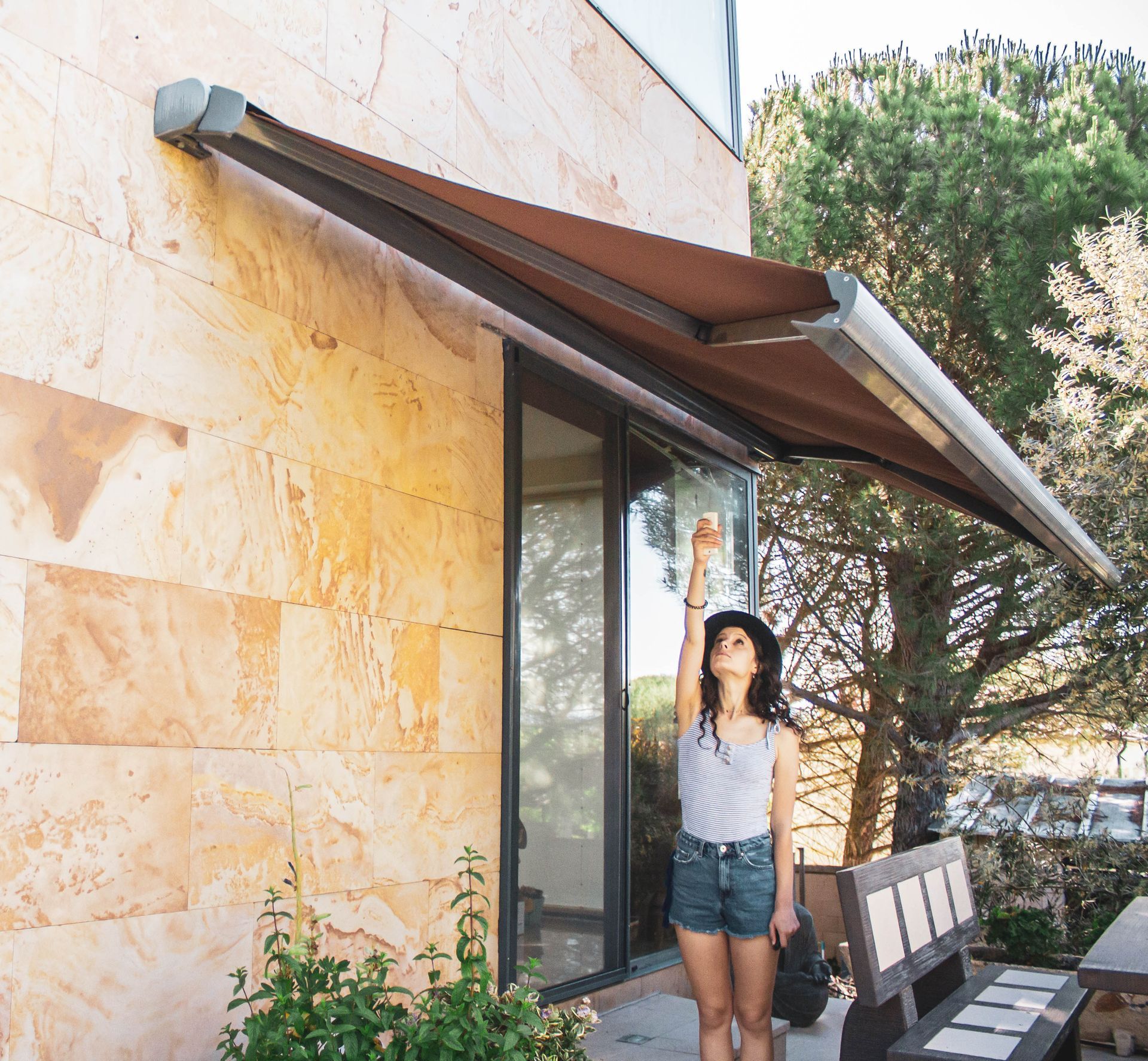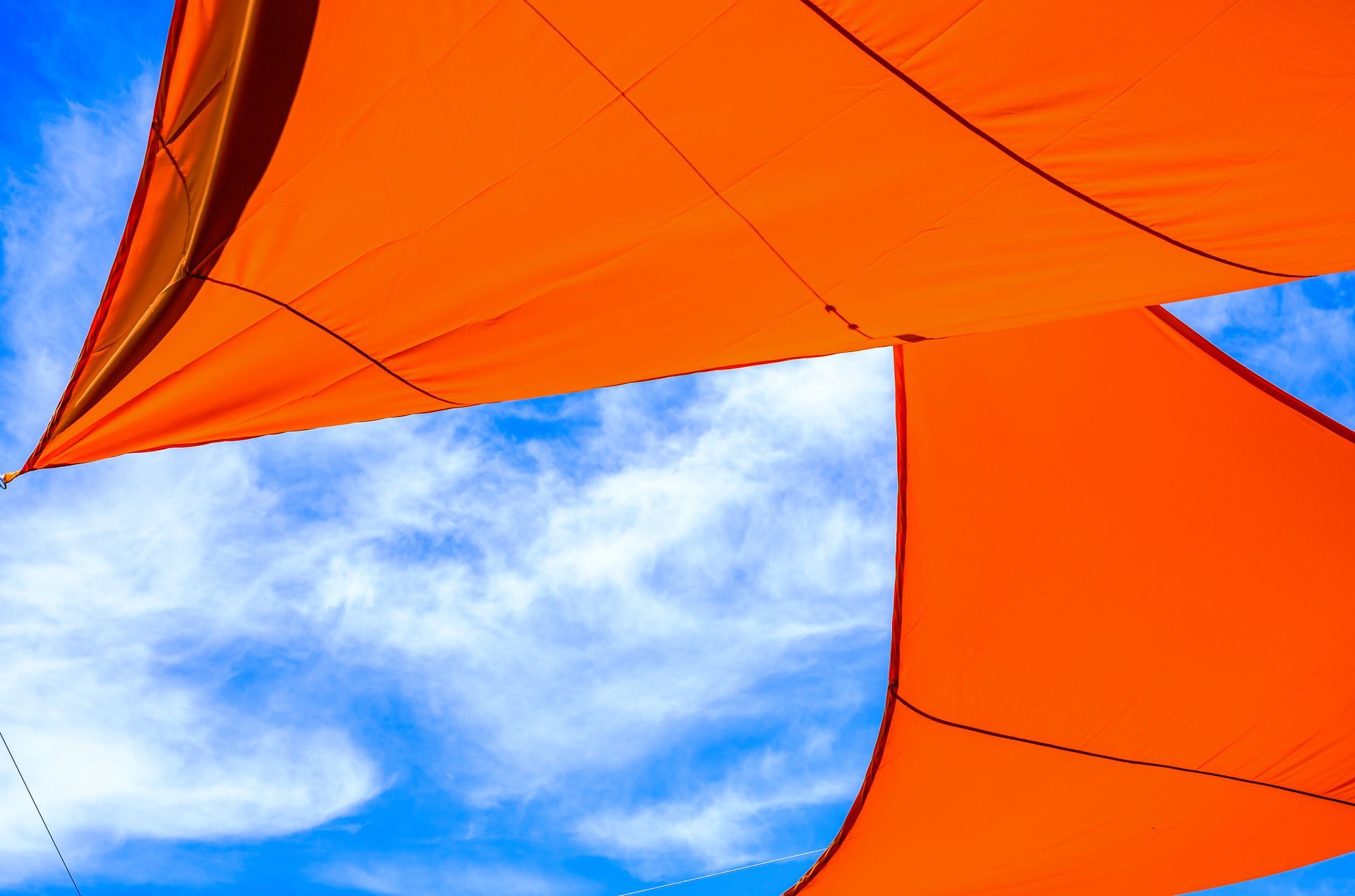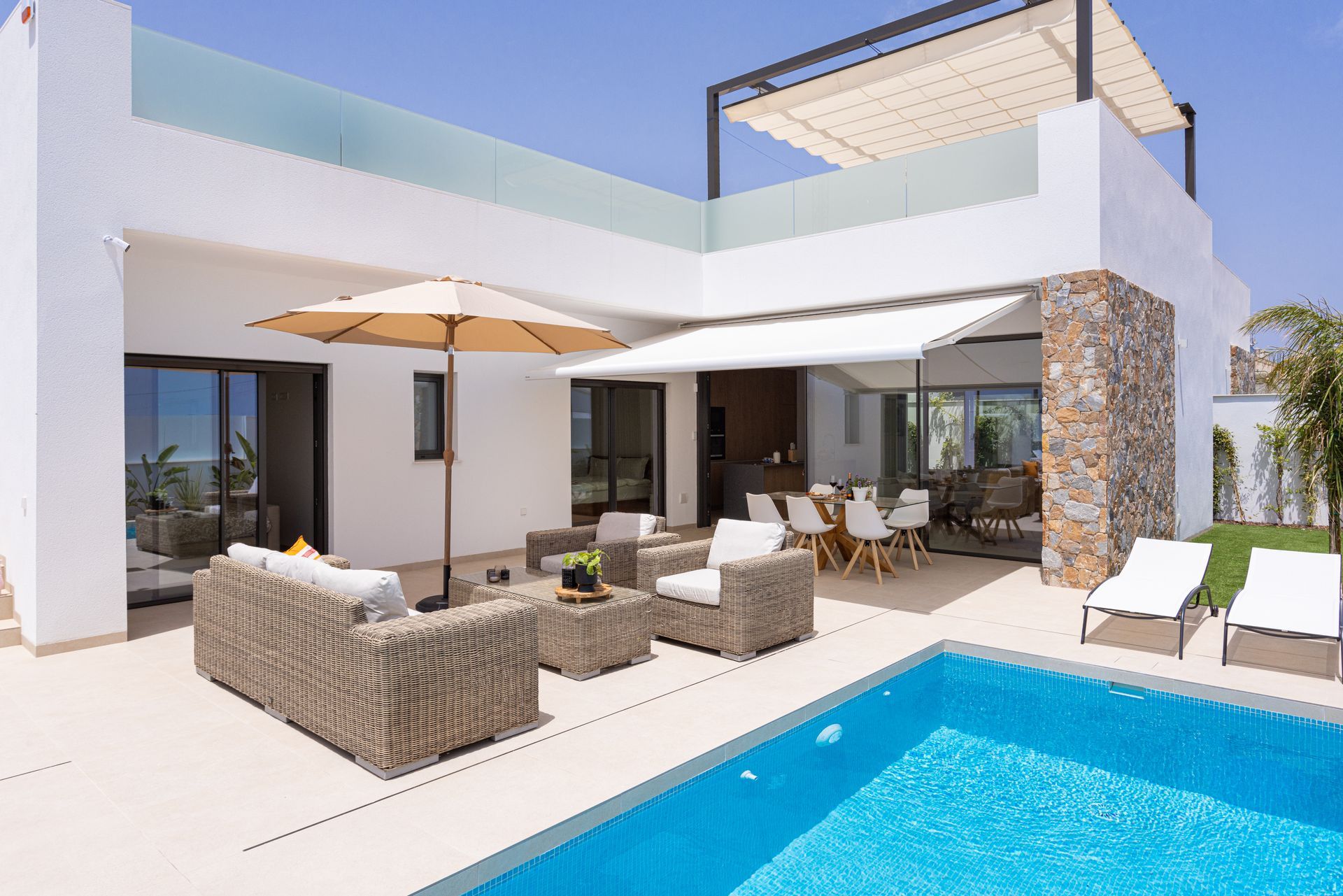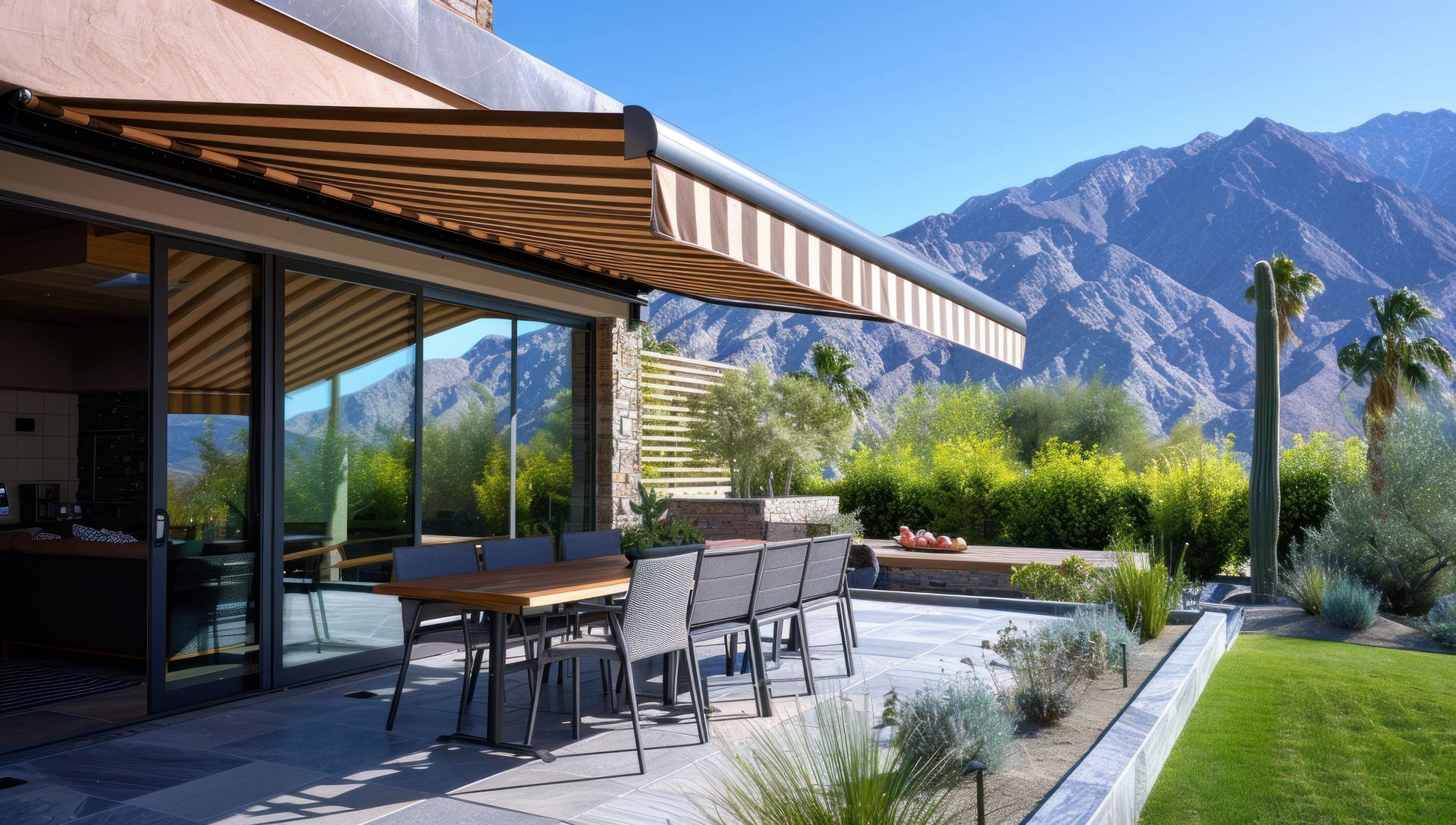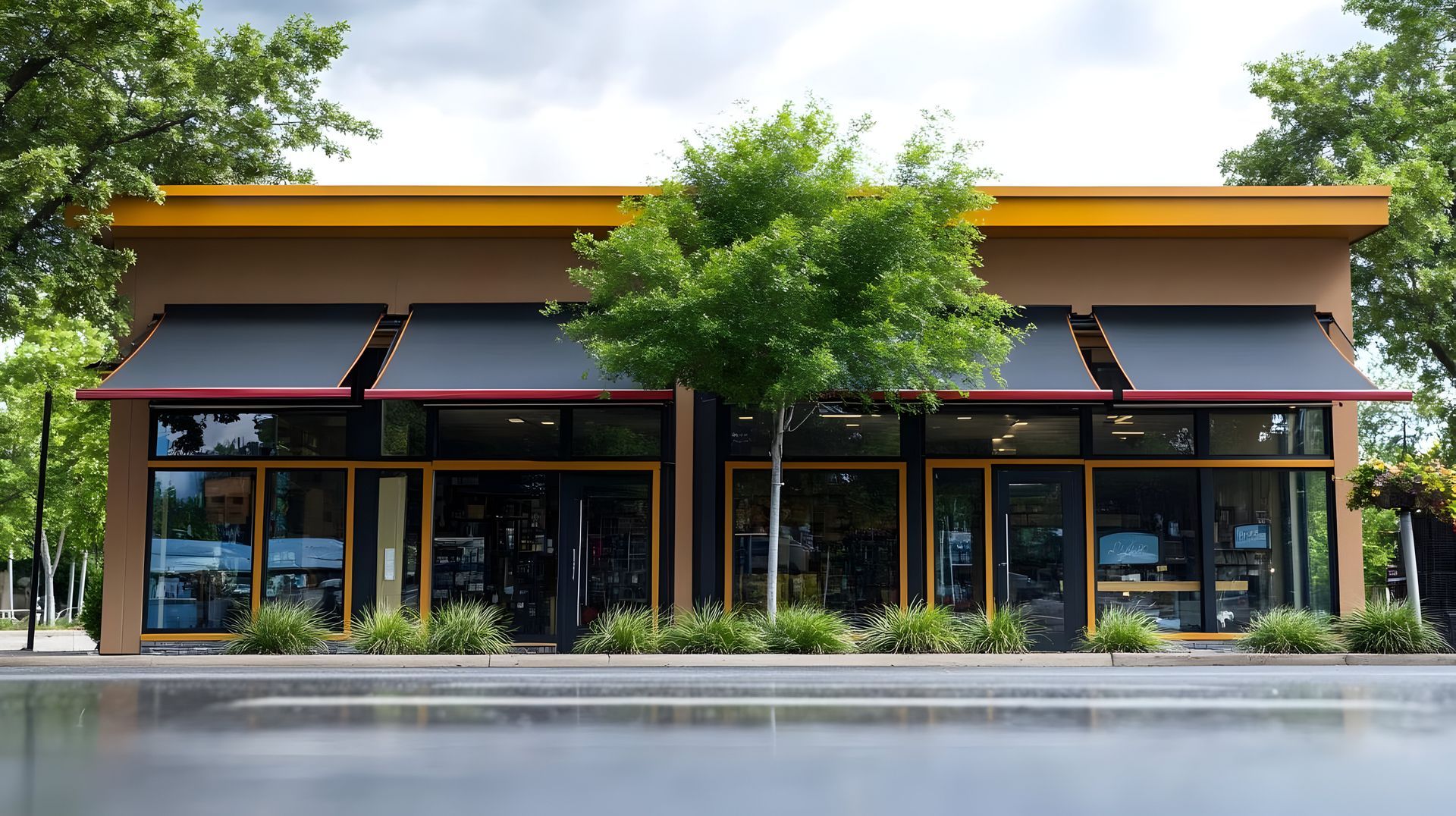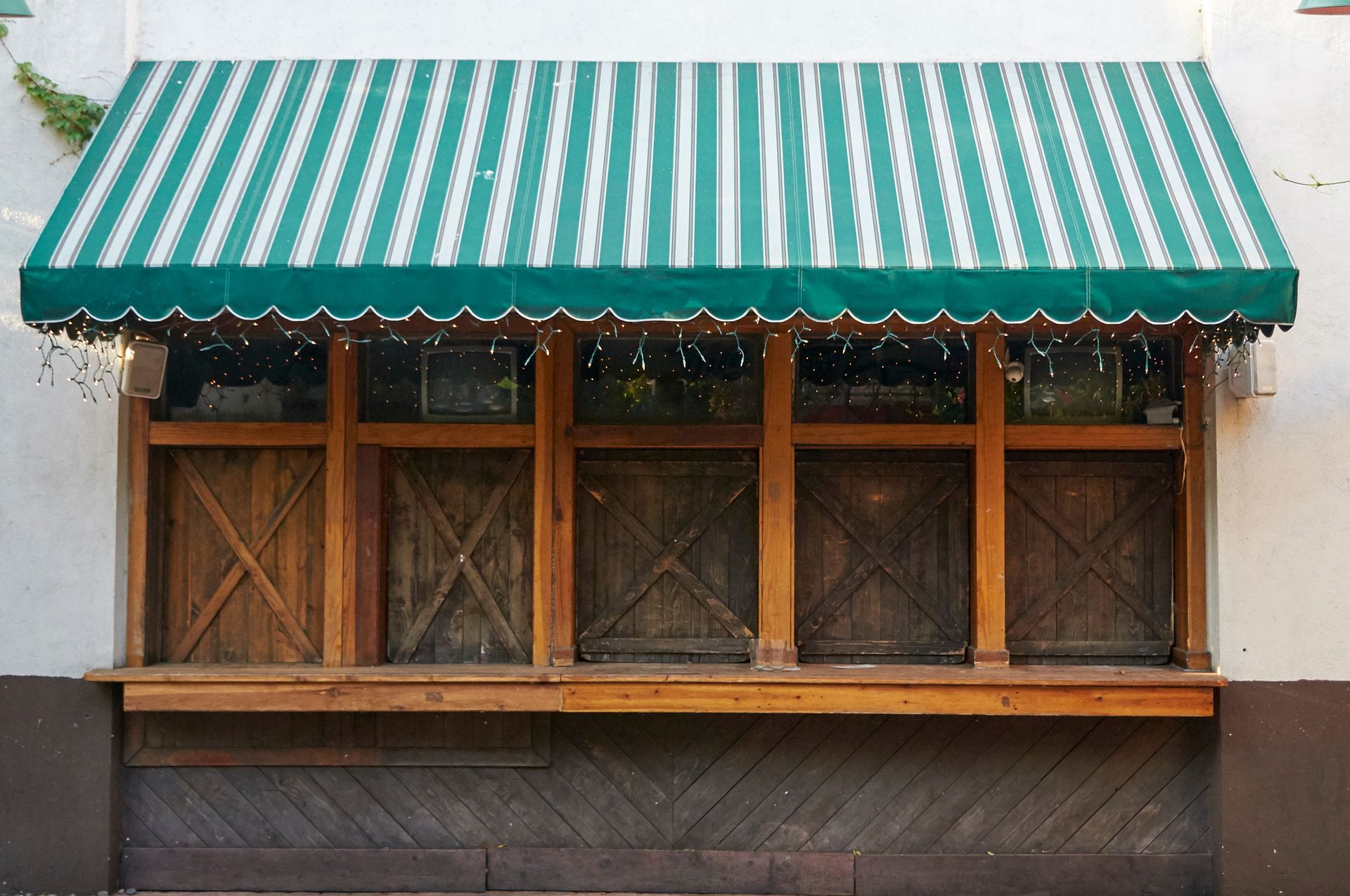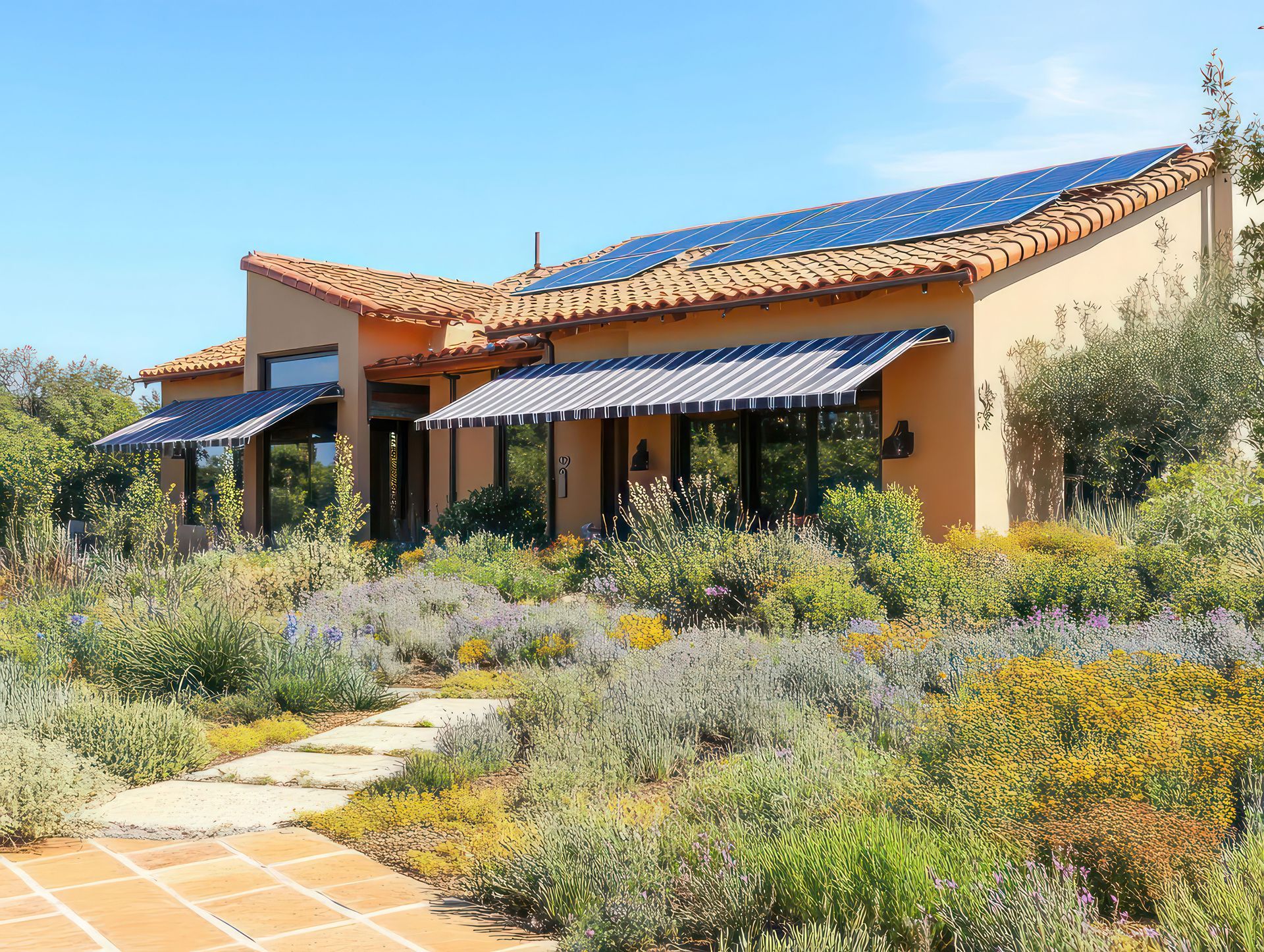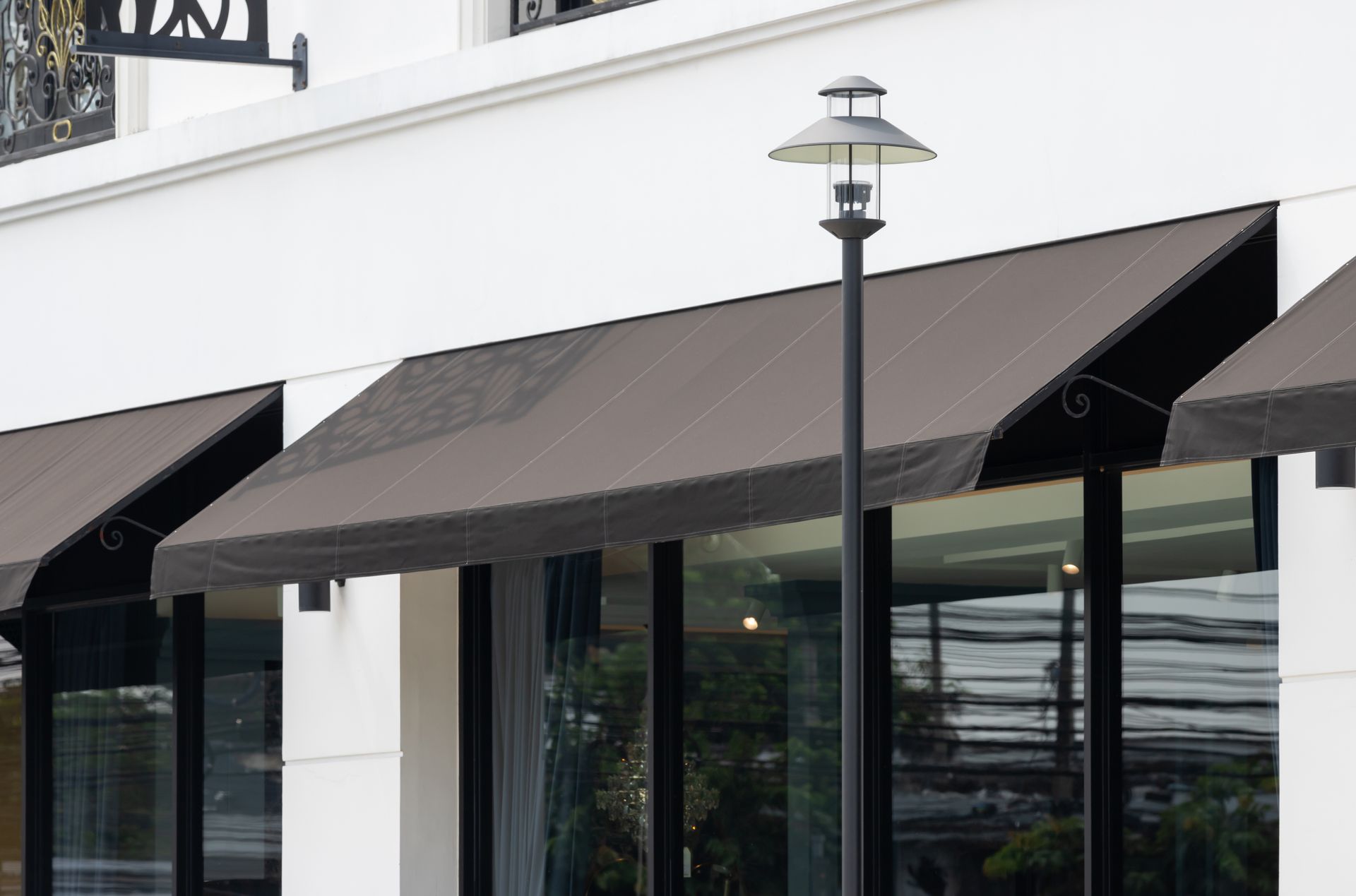Why Glare from Glass & Stucco Buildings Makes Awning Placement More Critical for Phoenix, Tempe & Scottsdale Homes & Businesses
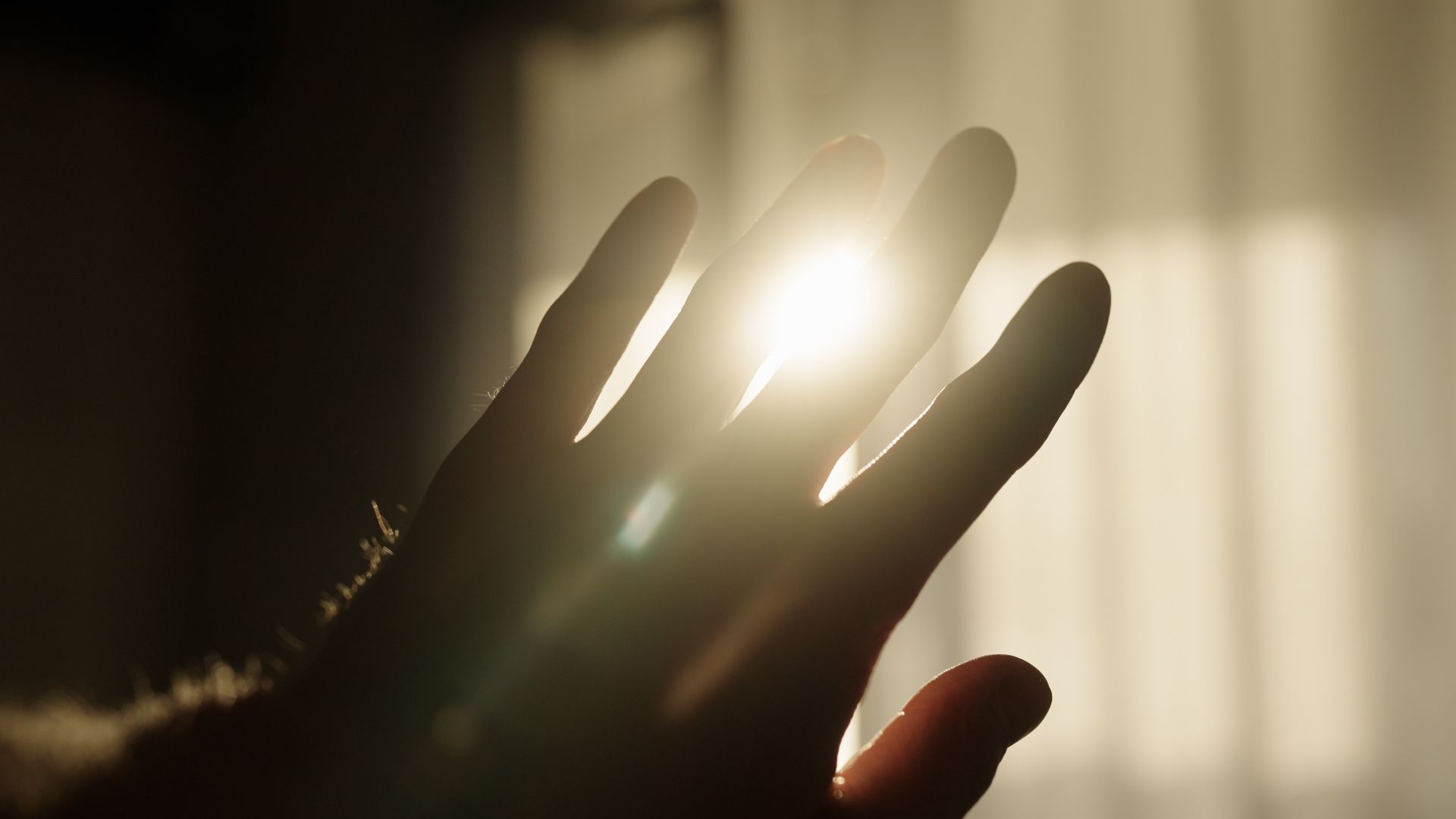
With more than 300 days of sunshine each year, homeowners and business owners alike are accustomed to managing heat and brightness. But one challenge often overlooked is the impact of solar reflection. This is the harsh glare bouncing off modern glass buildings and light-colored stucco surfaces.
This reflective light not only increases heat in outdoor spaces but also creates uncomfortable, sometimes unsafe, environments. This makes strategic awning placement not just an aesthetic upgrade, but a necessity.
Why Glare Is a Bigger Issue in Desert Cities
Unlike regions with cloud cover or denser greenery, desert cities amplify sunlight in several ways:
- Glass-heavy architecture: The rise of modern condos, office towers and retail developments has introduced massive panes of reflective glass. These surfaces redirect sunlight with almost mirror-like intensity.
- Stucco exteriors:
Popular throughout the Valley for their heat resistance, stucco walls, especially in lighter colors, bounce sunlight back into nearby windows, patios or sidewalks.
- Minimal natural shading: With fewer tall trees in many neighborhoods, there’s little to break up the sharp reflection of the sun.
The result is a multiplier effect: direct sunlight combined with reflective glare can make patios, storefronts and even shaded areas uncomfortably hot and visually straining.
Impacts on Homes
For homeowners, solar reflection can affect both comfort and utility costs.
- Patios and yards: Outdoor living is central to the Arizona lifestyle, but glare from neighboring buildings can make patios difficult to enjoy, even with traditional shade structures.
- Interior heat gain: Windows facing reflective surfaces receive extra solar load, driving up cooling bills.
- Eye strain and health risks: Glare inside and outside the home can make reading, working or relaxing difficult. In some cases, prolonged exposure may even cause headaches or worsen conditions like migraines.
Strategically installed awnings can block reflected rays at key angles, protecting outdoor sitting areas and limiting the amount of heat entering the home.
Impacts on Businesses
Businesses in Phoenix, Tempe and Scottsdale face a unique set of challenges:
- Restaurants and cafes: Outdoor dining is a major draw for customers during the fall, winter and spring months, but glare bouncing off a nearby office tower can send diners inside or to a competitor’s patio.
- Retail storefronts: Bright reflections make window displays difficult to see, discouraging foot traffic.
- Offices and clinics: Excess light causes discomfort for employees and visitors, reducing productivity and satisfaction.
Custom awnings are not only a comfort upgrade but also an investment in customer experience and operational efficiency.
Why Awning Placement Matters More Than Ever
Awnings aren’t one-size-fits-all. In desert cities where reflections come from multiple angles, placement and design are critical.
- Directional coverage: Awnings should be positioned to block both direct sunlight and the angles of reflection from nearby surfaces. For example, an east-facing patio may need deeper coverage if it reflects off a western glass façade.
- Material choice: High-quality, UV-resistant fabrics prevent heat buildup while withstanding Arizona’s extreme temperatures.
- Adjustability: Retractable awnings allow flexibility, providing coverage during peak reflection hours but retracting for starlit evenings.
- Integration with architecture: When designed thoughtfully, awnings enhance the look of a building while providing targeted functional benefits.
Real-World Scenarios in the Greater Phoenix Area
In Phoenix business districts, like in downtown, along Camelback at 24th Street and around Tempe Town Lake, glass towers can reflect harsh afternoon sun onto nearby patios. For restaurants and cafes nearby, well-placed awnings reduce glare while preserving the view.
Restaurants along Mill Avenue in Tempe and those on downtown Phoenix streets face similar challenges, where limited space for umbrellas makes overhead awnings the ideal solution for creating cooler dining environments despite the glare from surrounding buildings. In Scottsdale, retail strips benefit from stylish awnings that not only reduce interior heat gain but also maintain a polished, upscale look for luxury boutiques.
The Custom Shade Solutions You Deserve in the Valley
Ready to protect your space from the harsh desert glare? Contact us at Arizona Awning here on our website today or give us a call at 602-252-3430 for a consultation and discover how the right residential or commercial awning placement can transform your home or business.
